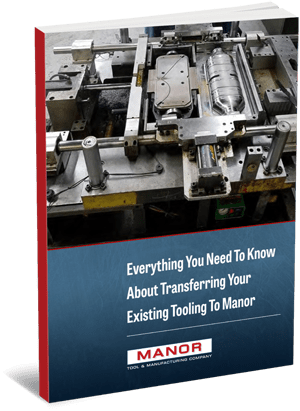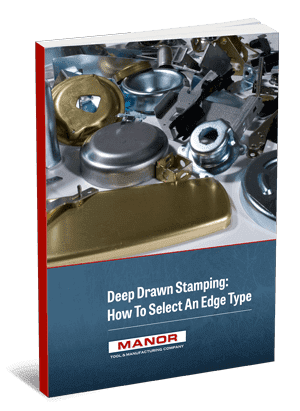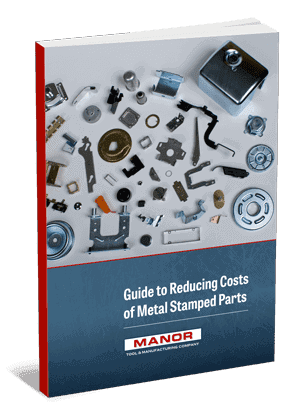The Benefits of Finite Element Analysis in Manufacturing
Introduction
Finite Element Analysis (FEA) has been, for many decades, the domain of high tech engineers, PhD’s and specialists. Scientists in labs huddled over mainframe servers late at night, writing and re-writing simulations that required the dedicated time of powerful computer servers. Due to this characterization of the process, until the 1990’s, FEA analysis was limited almost entirely to the aeronautics, automotive, defense and nuclear industries.
It was designated somewhat of a ‘dark art’ with respect to the more conventional manufacturing and design environment of CAD/CAM. However, due to great advances in the capability of software, faster computers and improved graphic user interfaces, also referred to as GUIs, FEA is now reaching more audiences. The tools are so much more accessible and easier to learn that it is no longer tucked away inside research facilities or housed on massive servers. It is widely available and ordinary desktop, laptop, and even tablet computers can run these highly computing intensive simulators.
What is Finite Element Analysis?
FEA is a computer-based process used for modeling complex products and systems. These simulations occur in a virtual environment for the purpose of ‘solving’ or finding a series of solutions to potentially complex performance issues. It is useful for all degrees of science and engineering disciplines.
Specifically, as applied to material sciences and engineering, it is used to calculate the strength and behavioral characteristics of a material under conditions such as stress, vibration and deflection. It can be used to investigate large-scale and small-scale behaviors of materials. FEA software is now faster and easier to use than ever before. It is no longer available from only a few companies and comes in a variety of levels of complexity. It is now so diverse that it can be spread around manufacturing facilities and even embedded into other design and control software that is already being used by operators.
How does FEA Work?
FEA works by breaking down a large structure, with high degrees of physical complexities and mathematical discontinuities, into smaller, more manageable sections. Each section represents the material properties of its local domain. By slicing the structure into smaller and smaller sections, the simulator gains an understanding of how the larger structure will respond to external or internal stimuli.
The start of this process begins by determining the placement of a theoretical array of ‘nodes’ on the structure.
- The NODE is a single point within the 2D or 3D structure. Each node is programmed with the material and structural data of its immediate location.
- The addition of lines between the nodes creates a MESH structure. The meshing encloses smaller, simpler sections of the full part. The denser the mesh, the more precise the results will be for the full system, but the more complex the computations.
- The regions that are enclosed by the mesh structure are a collection of finite ELEMENTS, hence, Finite Element Analysis.
Each element is defined by the more simple equations concerning stress, force, inertia, thickness, strength, acceleration, temperature, etc. pertaining to the border conditions along that unique mesh and those conditions within the element. The computer software keeps a listing of the individual elements, their neighboring elements, and the internal and border conditions. All of the mesh equations within the system are solved simultaneously and the results are used to determine how each node responds when external stimulus is applied to it, or to its neighboring elements.
When a simulation program is executed and stressors are applied to the system, each element begins to adjust its equations. These adjustments will either relieve or create additional stresses throughout the mesh, changing border conditions for its neighbors, just as its neighbors will change its own border conditions. If the nodes and meshes have been programmed properly, the system will eventually work all the stresses out of the equations and begin to settle.
This is called “convergence” and a solution is created. The computer then applies this solution to each individual node and from this, gets a theoretical stress and deflection function for each section of the structure. This result can be analyzed graphically or numerically within the program software. The solution is compared to the tolerances of the system to determine if the structure is strong enough for the application, even before the part is manufactured.
Programming the location of the individual nodes is critical. The nodes can be programmed with any amount of density. This density is what defines the precision of the response of the local region. Regions of higher node density will return a more accurate result for that region.
However, the more nodes in a region, the more computations that must take place to get a converging result, extending the run-time and memory usage of the system. It is practical to program a high density of nodes only in regions receiving large amounts of stress or other critical points of interest, while maintaining a minimum number of nodes throughout the bulk material that will see less complex stressors. By adding and subtracting nodes in key regions, the operator can also assist the computer in achieving convergence.
Key Benefits of the FEA Process
Increased Accuracy
In the past, ideas were sketched up, prototypes were developed and manufactured and then, during testing, it was found that key parameters were possibly overlooked. Using FEA requires the designer to create, or load, and maintain a ‘recipe’ of all material parameters for those in use. With this ‘recipe’, the designer can model all physical stresses on a part, even those that might be overlooked on initial designs. The use of FEA brings an immediate increase in material accuracy when designing a product, showing how ALL physical stresses may affect the design.
Enhanced Design
Allowing a designer to model an entire system instead of in its separate piece parts is a great advantage to the development of a product. Through FEA, it is now possible to determine how stresses within one piece will affect the materials in another separate, but connected, piece.
Better Insight into Critical Design Parameters
The ability to model the interior, as well as the exterior, of a design is one benefit of FEA. By determining how critical factors affect the entire structure (inside and out) and why failures might occur where they will is a huge advantage to a designer.
Virtual Prototyping
FEA simulators help remove multiple iterations of initial metal prototyping. The initial prototypes are very expensive as they are hand-built and time intensive. Even with the additional expense, they are usually very bad models of the actual parts. By initially simulating the system in FEA software, the designer can model different designs and materials in hours, versus the days or weeks of hard prototyping.
Fewer Hardware Prototypes
The advantage of higher-fidelity simulations with faster hardware allows developers to invest in virtual testing much earlier in the process than in the past. Its ‘ease of use’ makes it an ideal tool to uncover or confirm suspect results throughout the prototyping and manufacturing lifecycle, forcing the designer to rely on fewer physical prototypes.
Faster and Less Expensive Design Cycle
With FEA simulations, many design iterations are no longer dependent upon machine shop and manufacturing schedules. Each new design can be virtually tested in hours, instead of waiting days or weeks for a hard copy to be tested.
Increased Productivity, and Increased Revenue
A company that is proficient and professional its use of FEA software will be more productive as well as create an additional revenue stream. By using FEA software, the company will be more likely to produce better quality products in a shorter design cycle and with less waste of material and time. The use of the software itself can become a stream of revenue as they contract their services out to current and future clients.
How to Use Finite Element Analysis
Manor Tool has worked diligently to refine the design process for FEA simulations. When preparing a manufacturing process for FEA, the first thing is to get a sample of production material. This material is then sent to a lab for a physical and chemical analysis. This will determine the “recipe” of the metal, and within what range each component falls. These properties are then uploaded into the FEA software.
While the material is out for clinical sampling, customer piece part drawings are collected and initial reviews occur. These preliminary reviews determine the tooling die capability and die wear, as well as whether specified tolerances can be held.
This review is done independently of material weaknesses or flaws. After this review occurs, a 3D solid model of the part is made. From the 3D model, drawings are also made for the necessary tooling dies to manufacture the part.
With the solid models and the material analysis in hand, they are each programmed into the FEA software. The software then begins to render the part being made. This rendition can be watched in real-time. Such a process allows the designer to see the tooling functioning and forming the material into the proper shape.
Once the rendering is completed, a report is generated analyzing the formability, thinning and thicknesses of the part. It will also show the probabilities for material cracking or splitting in critical regions.
This report allows the designer to investigate the trouble, or high-risk, regions and take measures to improve the results.
- Would different, or better, tooling make a difference? Would additional tooling stations help reduce stresses? Etc.
- Would adjustments to the print make a difference? Will altering dimensions like radius or depth makes a difference?
- How about material choices, will a different hardness spec be a better fit for the application? Alternatively, would a 300 series stainless work instead of 400 series stainless?
New models can then be uploaded into the software with the improvements and the process re-simulated in a matter of hours or (at most) days. Instead of the weeks that it might take to have parts of new materials or dimensions completely remanufactured.
At this point in a regular manufacturing process, a customer whose parts are being made for someone else might be in an awkward position of having to go back and explain that the part cannot be made. However, FEA provides a tool to expose any catastrophic issues early – even before manufacturing has begun. It also gives the customer a defined reason for the issue and a simulation that shows why it occurred, and it does this with less waste in materials, time and money.
Customers are now getting their parts on time because, with FEA, a quoted lead-time of 10-12 weeks does not extend to 16-18 weeks due to mistakes or unforeseen problems. Even post processing quality control has seen benefits from this technology. If there is something wrong with a batch of parts, by having a direct analysis of the raw materials you can look at the FEA reports and see the differences between one batch of raw materials to the next and determine any possible supplier issues.
Manor Tool and Finite Element Analysis
Manor Tool has been using FEA software for the last five years; before then it was similar to throwing darts at a moving target when it came to the predictability of a successful part on the first attempt. There was too high of a probability that a tool would be built, and on the first hit, it would split.
Now, with FEA simulations, the target has stopped moving, the distance between us and it has shortened, and the bull’s-eye has become very big. Manor Tool’s designers can look into the future and gauge the possibility of success, or what it will take to be successful, before any die development (engineering time) or die building (manufacturing time) has taken place.
Subsequently, every project Manor has run with FEA has been successful on the first attempt. Manor’s customers have their parts delivered at a reduced cost and on time. This strengthens the customer relationship, as they are confident about a manufacturer’s performance.









